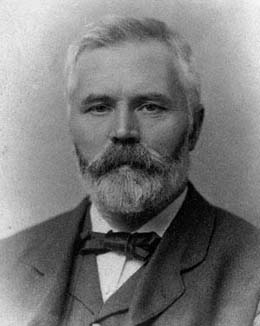Andrew Gray (physicist) facts for kids
Quick facts for kids
Andrew Gray
|
|
|---|---|
 |
|
| Born | 2 July 1847 Lochgelly, Fife, Scotland
|
| Died | 10 October 1925 (aged 78) |
| Alma mater | Glasgow University (MA 1876, DSc, LLD(Hon) 1896) |
| Known for | "Absolute Measurements in Electricity and Magnetism" (1883) "Treatise on Bessel Functions" (1895) "The Scientific Work of Lord Kelvin" |
| Spouse(s) | Annie Gordon |
| Children | James Gordon Gray |
| Scientific career | |
| Fields | Physics Mathematics |
| Institutions | Private Secretary to Sir William Thomson, Glasgow (1875–80) Secretary to Sir William Thomson, Glasgow University (1880–4) Professor of Physics, University College, Bangor, Wales (1884–99) Professor of Natural Philosophy, Glasgow University (1899–1924) |
Andrew Gray (born July 2, 1847 – died October 10, 1925) was a smart Scottish scientist. He was good at both Physics and Mathematics. He was also a Fellow of the Royal Society and a Fellow of the Royal Society of Edinburgh, which are special honors for scientists.
Contents
Life of a Scientist
Andrew Gray was born in a place called Lochgelly, in Scotland. After going to school there, he went on to study at the University of Glasgow.
Working with Lord Kelvin
In 1875, Andrew Gray started working with a very famous scientist named William Thomson, who later became known as Lord Kelvin. Andrew Gray was Lord Kelvin's assistant and private secretary. This was a very important job! He helped Lord Kelvin with his scientific work for many years, until 1884.
Becoming a Professor
In 1884, Andrew Gray became a Professor of Physics at a new university called University College of North Wales in Bangor. This was a big step in his career.
While he was there, he was chosen to be a Fellow of the Royal Society of Edinburgh in 1883. This means he was recognized as an important scientist by a group of experts. Later, in 1896, he also became a Fellow of the Royal Society, which is another very high honor for scientists in the United Kingdom.
Returning to Glasgow
Andrew Gray stayed in Bangor until 1899. Then, he moved back to Glasgow. He took over from Lord Kelvin as the Professor of Natural Philosophy at Glasgow University. This was the same job Lord Kelvin had before he retired. Andrew Gray held this important teaching position for 24 years, until 1923. He passed away shortly after that, in 1925.
Family Life
Andrew Gray was married to Annie Gordon. They had a big family with four sons and four daughters. One of their sons, James Gordon Gray, also became a well-known scientist.

